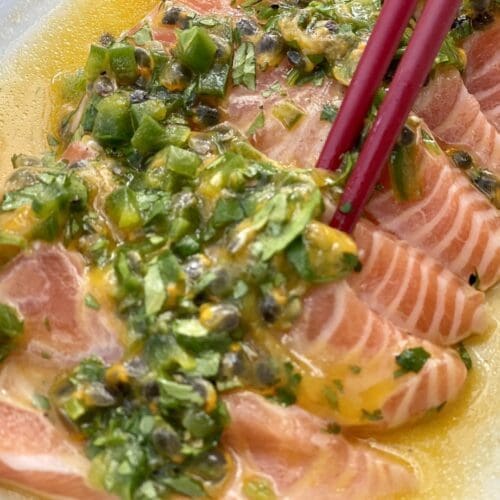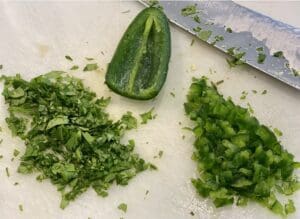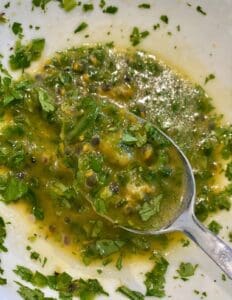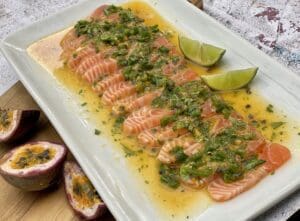
Salmon Ceviche with Passionfruit
Spring's here with chef Rick Stein's Passionfruit Salmon Ceviche. A mouthwatering fusion appetiser with lime, coriander and jalapenos
Ingredients
- 250 gm sashimi/sushi grade salmon (sliced thinly) (NOTE 1)
- 1 small jalapeno (chopped finely)
- 1 tbsp grape seed oil (or olive oil)
- 2 tsp fresh lime juice
- 1 tsp fish sauce (NOTE 2)
- 1½ tsp caster sugar (NOTE 3)
- ¼ tsp salt
- salt and pepper to taste
- 2 tbsp fresh passionfruit pulp (1-2 fruits)
- 2 tsp finely chopped coriander
Instructions
- Slice the jalapeno pepper in half and remove and discard the seeds, then dice it finely.

- In a small bowl, combine the oil, lime juice, fish sauce, sugar and salt, then mix well until the sugar dissolves. Add in the passionfruit, jalapeno and coriander. Have a taste and, if needed, add more salt and pepper to your liking. Leave the dressing at room temperature for 10 minutes for the flavours to combine.

- Place the salmon slices neatly in a row on a plate with the pieces slightly overlapping. Pour the passionfruit dressing over the salmon and let it sit for 5 minutes, then serve immediately.

Notes
(NOTE 1) Sashimi/sushi quality salmon - It's vital to purchase salmon that is sold specifically for sashimi as we're serving this salmon raw. Sashimi-grade salmon is more expensive, but it's the freshest salmon available. Don't risk using regular salmon as it may lead to ingesting bad bacteria, which may cause food poisoning. Your fishmonger should be happy to slice the salmon nicely for you.
(NOTE 2) Fish sauce - My favourite brand is Thai 'Squid' fish sauce, but any brand of fish sauce will work. It's sold at supermarkets in the International section or at an Asian grocery store. Fish sauce is pungent with a strong fish smell but adds wonderful flavours to Asian cuisines.
(NOTE 3) Caster sugar (superfine sugar) - Caster sugar has finer granules than regular white sugar, but it's not the same as icing/powdered sugar. Many baking or candy recipes call for caster sugar as it dissolves faster and better into mixtures. If you can't find caster sugar, you can make your own by placing regular sugar in a food processor or blender. Pulse the sugar a few times until it looks finer, but don't over-blitz to a powder consistency. However, you could just use equal amounts of regular white sugar.
I slightly adapted this recipe from Rick Stein's 'Marinated salmon with passionfruit, lime and coriander' recipe
I've used a third-party application to calculate the calories and nutritional information, so please use this as an approximate guide only.
Cooking measurements are in Australian standard spoon and cup measurements. For specific details and conversions, visit our Australian Cooking Measurements page.
Nutrition
Serving: 1servingCalories: 270kcalCarbohydrates: 7gProtein: 25gFat: 15gSaturated Fat: 2gPolyunsaturated Fat: 8gMonounsaturated Fat: 4gCholesterol: 69mgSodium: 605mgPotassium: 696mgFiber: 2gSugar: 5gVitamin A: 323IUVitamin C: 14mgCalcium: 20mgIron: 1mg